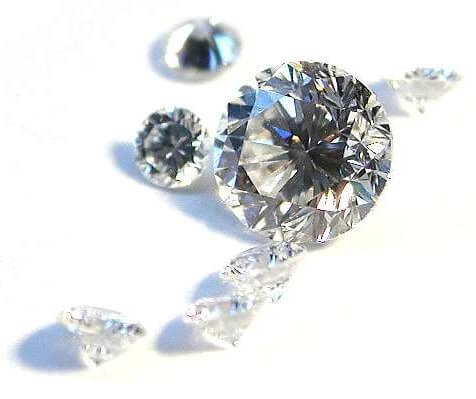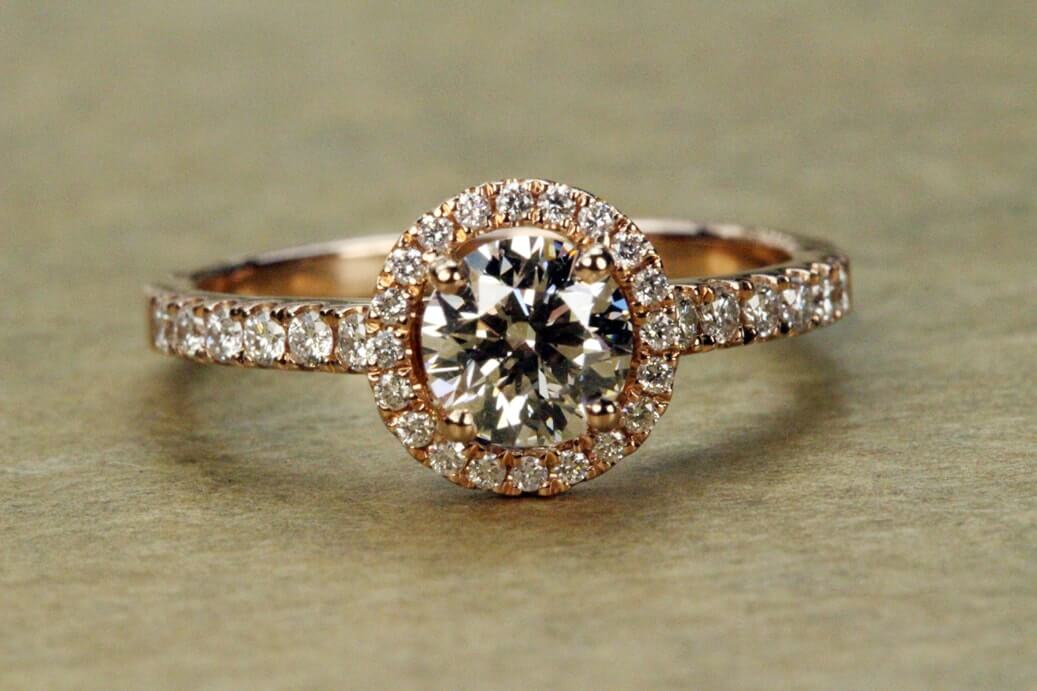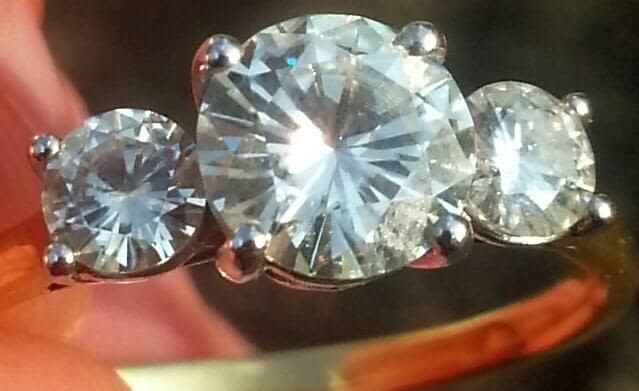Diamond Simulant: How to tell the Difference Between a Diamond and a Diamond Simulant?
I’ll take the sparkly one…
The problem (or maybe the blessing) is that there are several “sparklers” but not all of them are real diamonds - even if they kinda look like it. And honestly, this isn’t a shaming piece that’s out to tell you all the reasons why a “diamond is forever.” Sometimes a diamond isn’t in the budget. Sometimes, other alternatives catch your eye first. Sometimes it's a combination of diamond prices, ethics, and wanting something other than a diamond engagement ring.

As long as you get exactly the stone you want and know what you’re buying - if you’re happy, we’re happy.
Because at the end of the day, the only time wearing a diamond simulant isn’t cool, is if you bought it thinking it was a natural diamond.
Other than that, the choice is 100% yours.
But how do you know if that sparkly white stone is actually a diamond?
Leave that part to us. Below, we’ll break down the 3 most popular diamond stand-ins and how to tell them apart (if you can) from an earth mined diamond. We have to warn you, while these stones might be considered "simulated diamonds" they shine brightly in their own right, too.
Ready? Let’s break down the bling.
How to tell the difference between diamond and cubic zirconia?

AKA CZ. If you just cringed, get into a time machine and leave the 1980’s stat, because we aren’t talking about the same cubic zirconia that yellowed within weeks of wearing it and scratched faster than a cat taking a bath.
Cubic Zirconia is still one of the most popular diamond simulants that has improved over the years, and one of the reasons is color. CZ delivers that icy-white color of a high-grade diamond, minus any inclusions - and price tag. You can score the D/IF look for a few hundred dollars, as opposed to tens of thousands for a decent carat weight diamond of the same color and clarity.
However, CZ is considered synthetic (manmade) and not what some brides call a “forever stone.” Though truth be told, I’ve seen CZ outlast some marriages.
So, what are you getting besides a flawless color with no inclusions?
Here’s the lowdown on a CZ -vs- a Diamond:
- A CZ is heavier than a diamond. If you held two stones of about the same size, the CZ will always be heavier.
- A CZ will scratch more easily than a diamond.
- A CZ is not as hard on Mohs scale (8-8.5) which is why it scratches, but still harder than many semi-precious gemstones.
- A CZ has less shine/sparkle than a diamond - with a refractive index at 2.15 (compared to a diamond at 2.42) but it’s light dispersion (meaning the colored light you see back from the stone) is higher than that of a diamond.
How to tell it’s a CZ and not a diamond:
If you’re still unsure if you’re looking at a CZ or a diamond, try the breath test.
It’s simple, free and reliable. Just breathe on any diamond or CZ and you’ll know right away if you’re looking at a CZ or diamond. A diamond won’t really fog over, whereas a CZ heavily fogs over and that fogginess hangs around for a long time afterwards, where the diamond clears up right away. Make you feel like a diamond expert, right?
You may be all aboard the CZ train now, but if you’re still not sold on leaving diamonds behind altogether, you may wanna try our next (not so) wanna-be.
Lab-Grown

Okay, so a lab grown, lab made diamonds or an “above ground” diamond isn’t really a wanna-be, it actually IS a full-fledged diamond.
So why make the distinction?
Here’s what’s up with lab-grown diamonds -vs- earth-mined diamonds:
- A man-made diamond (aka lab-grown or above ground diamond) has all the same elements of an earth-mined (“real”) diamond -- it’s just grown in a lab (hence, the above ground thing.
- The big difference? Where they come from (the lab) and how long it takes to produce a lab grown diamond. Earth-mined diamonds took over a billion years to form, and lab-grown diamonds take approximately 6-10 weeks to grow.
- “Real is Rare” -vs- “World Positive”: these two terms are thrown around pretty regularly when discussing lab-grown diamonds and here’s what it comes down to: One half of the discussion believes that the consumer -- like you and me -- want a stone that is rare, and natural from the Earth and therefore it MUST be mined. The other half wants to take diamonds out of their often questionable and checkered past, all while leaving zero-carbon footprint.
So if it’s the real-deal and commonly about 20-40% less than an earth-mined diamond, you may have found your new perfect sparkle, while leaving your conscience fully intact.
Moissanite

Maybe you’re already into the Moissanite craze but if you’re new to this, here’s why moissanite may quickly become your new favorite diamond alternative:
- Tough as diamonds (almost): on the Mohs scale for hardness, moissanite rates at an impressive 9.25 (diamonds come in at a 10).
- Less money on the center stone: because it’s a fraction of the price of a diamond, if you’re on a budget, moissanite may be the way to go if you want an impressive center stone AND an intricate setting. So basically you can have your cake and eat it too -- and there’s nothing wrong with that.
- Charles and Colvard the leading names in moissanite development (and the original patent on the stone) has spent years working out the major moissanite “kinks” - such as color. Moissanite have a green/yellowish undertone, and C&C recently developed a stone that is pure white.
- Moissanite sparkles differently than a diamond. It’s beautiful, but different. While a diamond sparkles in broad flashes of light, a Moissanite sparkles like a disco ball, with tiny “pin prick” flashes of color. This is one of the dead giveaway that Moissanite is NOT a diamond, but a man-produced gemstone (even though it can be found naturally in space) that’s deserving of it’s own fan-club.
- Moissanite IS a forever stone.
When looking at these two side by side (diamonds -vs- moissanite), the moissanite tends to have more fire and spectral colors than a diamond, but nobody’s actually ever complained about that.
At the end of the day, it all comes down to personal choice.
Do you absolutely love diamonds to the moon and back, and would rather die than have a dupe? If that’s the case, stick with diamonds, because even if nobody else can tell the difference - and honestly most people can’t- you’ll always know that what’s on your finger isn’t a diamond.
But if you’re not sold on a diamond just for the sake of having diamonds, then it might be time to consider the wanna-bes as their own thing, instead of just a diamond replacement, or fake diamond. Because while all these stones may sport a similar look, they each offer their own unique sparkle and style and that just may be your thing.
Are you still into diamonds? Or alternatives just fine with you? Let us know in the comments. And of course, if diamonds are still your best friend, let us help you pay a lot less for your dream diamond here. For engagement rings click here.


Diamond vs Diamond Simulant FAQs